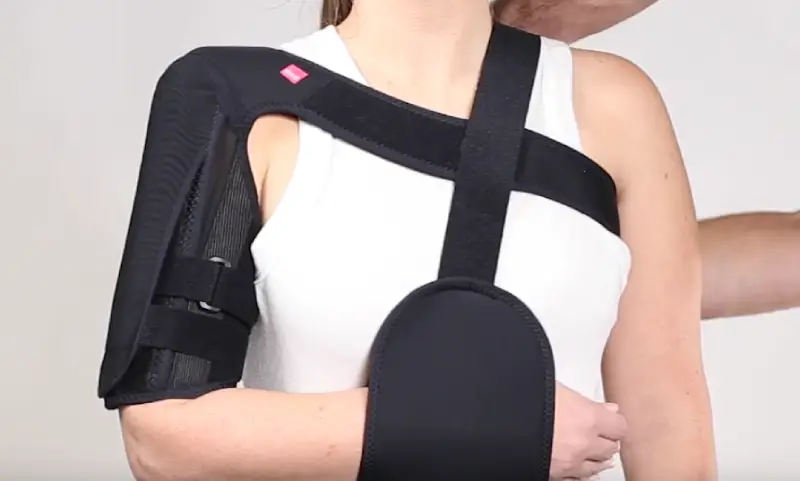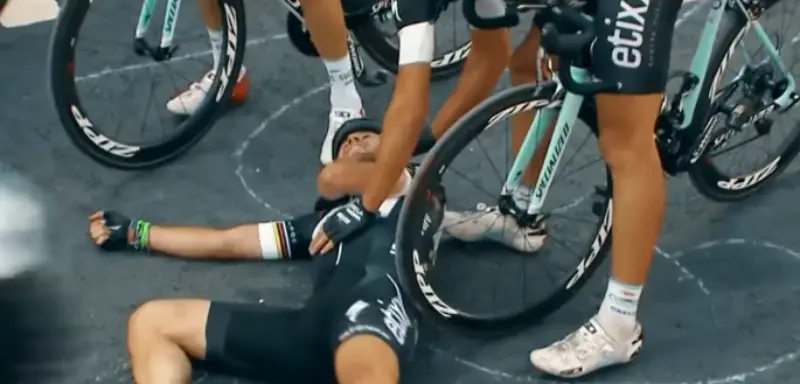Fractured arm bones can sometimes injure nearby nerves, leading to numbness, tingling, weakness, or loss of sensation in the arm or hand. Without proper rehabilitation and physical therapy, a fractured arm may lead to stiffness, reduced range of motion, and muscle weakness.
The arm will heal fully in 12 weeks after it has been broken or fractured. However, regaining full strength can take up to two years, even with physical therapy. During this time, you may be asked to limit or take precautions with work, driving, sports, and other activities involving pushing or pulling.
In this blog post, we will explain the timeline of healing a fractured arm, detailing each phase from the immediate reaction to the remodeling phase. Factors affect the healing time of a fractured arm.
How Long Does A Fractured Arm Take To Heal? 7 Fast Tips

A fractured arm can be challenging, impacting daily activities and requiring time and patience for recovery. Several factors can influence the recovery time, including the location and type of break.
The recovery from wrist and elbow injuries typically takes longer than injuries elsewhere along the upper or forearm. Here are some of the four critical phases of healing that dictate how long a fractured arm takes to heal.
Immediate Phase
The immediate phase begins and lasts 1-2 weeks from arm fracturing. The body’s response to this traumatic event involves inflammation, pain, and swelling as the natural healing process is initiated.
Blood vessels constrict to minimize bleeding while immune cells rush to the fracture site to kickstart the repair process. During this phase, arm immobilization is typically necessary to stop further damage and let the body do its work.
Acute Phase
As the acute phase unfolds, specialized cells called osteoblasts get to work repairing the fractured bone. Within 2-3 weeks, new living bone, cartilage, and fibrous tissue form at the fracture site. Collagen and cartilage form a soft callus around the fracture site to stabilize and facilitate healing.
It’s crucial for laying the groundwork for new bone growth and ensuring structural integrity. Patients may experience discomfort and limited mobility during this phase as the bone undergoes initial repair.
Consolidation Phase
The consolidation phase marks a significant milestone in the healing process. The callus transforms into hard bone tissue by depositing minerals like calcium and phosphorus. Patients may notice less pain and swelling as the bone structure strengthens. Physical therapy and targeted exercises may be introduced during this phase to improve the range of motion and prevent muscle atrophy. Compliance with rehabilitation protocols is essential for promoting bone consolidation and speeding up healing.
Remodeling Phase
In the last phase of healing, the remodeling phase, the bone undergoes reshaping and realignment to restore its original form and strength. Osteoclasts work to remove excess bone tissue, while osteoblasts continue to lie down new bone in a precise and organized manner.
This phase can last several months and is crucial for fine-tuning the bone structure to withstand normal activities and stress. Activity levels gradually increase under medical supervision to prevent re-injury and ensure optimal bone remodeling.
10 Factors Affecting Fractured Arm Healing Time

When a person sustains a fractured arm, several factors come into play that can impact the healing process. Understanding these influences is crucial for healthcare professionals and patients to navigate the recovery journey effectively. Let’s delve into the various elements that can impede the healing stages of a fractured arm:
Fracture Type
The type of bone fracture plays a significant role in determining the complexity of the healing process. Fractures can be classified as transverse, oblique, spiral, comminuted, or green stick.
Each type presents unique challenges that can affect the rate and quality of healing. For a cyclist, a spiral fracture might result from a fall, requiring precise management to ensure a smooth recovery.
Location of the Fracture
The location of the fracture within the arm also has a big impact on healing. Fractures closer to joints or areas with limited blood supply may experience slower healing due to reduced nutrient and oxygen availability. Cyclists who frequently use their arms for balance and support might find fractures near the elbow or wrist particularly challenging.
Patient Age
The age of a patient can play a significant role in the healing of a fractured arm. Younger individuals heal faster because of their higher metabolic rates and better bone density. Older cyclists may experience delayed healing because of reduced bone mass and slower cellular regeneration, affecting their ability to return to the bike.
Comorbidities
Individuals with underlying health conditions, such as osteoporosis, rheumatoid arthritis, or autoimmune disorders, may face challenges in the healing process.
These comorbidities can weaken bones, compromise the immune system, and hinder the body’s ability to repair and regenerate tissues. Cyclists with these conditions need tailored rehabilitation plans to ensure a safe return to their sport.
Smoking
Smoking adversely affects bone health and healing. Cigarettes contain chemicals that constrict blood vessels, reducing blood flow to the fractured area. This diminished blood supply can impede the delivery of nutrients and oxygen vital to healing, prolonging a cyclist’s recovery time.
Poor Nutrition
Vitamin D, calcium, and protein are needed to form new bones and repair fractures. Adequate nutrition is vital for supporting the bone remodeling process and ensuring optimal healing outcomes. Cyclists should focus on a balanced diet to maintain their overall health and recovery efficiency.
Impaired Blood Supply
Issues with blood supply to the fractured site can lead to a condition known as non-union, where because of reduced soft tissue injury can impair blood flow and hinder healing. Maintaining good circulation through gentle, approved exercises can support recovery for cyclists.
Surgical Reduction of the Fracture
While surgical intervention is sometimes necessary to realign and stabilize the fractured bone, it can also introduce risks that affect healing. Infections, complications from anesthesia, or improper bone alignment post-surgery can all impact the recovery timeline. Cyclists should work closely with their medical team to monitor for any signs of complications.
Infection
Infected fractures pose a significant threat to the healing process. Bacteria can impede bone regeneration, cause inflammation, and lead to further complications if not promptly addressed through antibiotics or surgical debridement. Cyclists should ensure proper wound care and hygiene to prevent infections.
Diabetes

Individuals with diabetes face specific challenges in healing fractures due to issues such as poor circulation, neuropathy, and impaired immune function. An elevated blood sugar level can interfere with the normal inflammatory response required for healing, leading to delayed or compromised recovery. Cyclists with diabetes should manage their condition carefully to support bone healing.
Tips for a Speedy Recovery
- Proper Diet and Hydration: Consuming a nutritious diet full of vitamins, minerals, and protein helps bone healing. Ensure to stay hydrated as well, as water is crucial for various bodily functions, including the healing process.
- Avoiding Certain Activities: Follow your healthcare provider’s instructions regarding movement restrictions and weight-bearing limitations. Engaging in things that could further aggravate the injury or impede healing should be avoided.
- Pain Management and Medication Adherence: Proper pain management is vital for ensuring comfort during the recovery period. Adhering to prescribed medications, whether pain relievers or anti-inflammatory drugs, can help control discomfort and inflammation.
Conclusion
The healing journey of a fractured arm is a nuanced process that can span up to two years for some folks. It’s not just about passing the time; it’s also about being aware of the factors that may impede or speed up your recovery, like proper nutrition and the need to abstain from certain activities that could further injure the arm.
Adherence to medical advice, willingness to undergo rehabilitation, and a positive attitude are critical to your healing process. Remember, each healing journey is unique. With time, you will regain your strength and return to that favorite trail, soaking up the sunshine in no time.
FAQs
What Are Signs That My Fractured Arm Is Not Healing Properly?
If you experience persistent pain, swelling, deformity, or limited range of motion, or if your symptoms worsen instead of improving over time, it’s crucial to consult your healthcare provider. These could be indicators of delayed healing, non-union, infection, or other complications that require medical attention.


